places to visit in France
a personal top ten
Are you looking for suggestions for the most amazing places to visit in France? Whether you're a first time traveller or confirmed Francophile we've put together our top 10 bucket list places you must see on your next visit.
PAGE MENU
Top 10 places to visit in France
2) Chamonix and the Vallée Blanche
4) Christmas markets in Strasbourg
More places to visit in France
France is a huge country but whichever region you're visiting you'll find at least one of our must see places within reach. Although we've styled this list the best 10 places to visit in France we've not attempted to put these locations in any particular order. They're all places dear to the hearts of our writers who have drawn on their personal experiences to compile this list.
So without further ado...
Best 10 places to visit in France
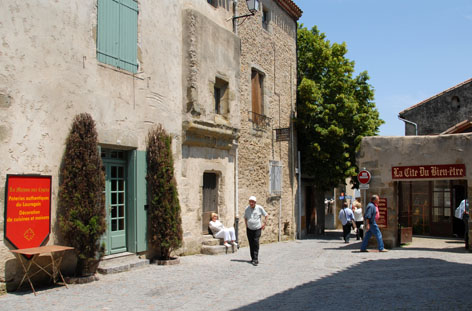
Carcassonne at dusk
This beautiful, ancient city is hugely popular with tourists; shops display their fair share of souvenir tat, vehicles are not permitted in the citadel (unless you're staying at one of the hotels there), but the restaurants certainly now how to feed you. But the greatest pleasure comes on a warm summer's evening, when the tourist have left, and you can wander the cobbled streets alone, taking in the floodlit walls and ramparts, and finding a quiet place from which to watch the sun go down. One of the most amazing experiences and places to visit in France.
Chamonix and the Vallée Blanche
The two-part lift in the cable car to the summit of the Aiguille du Midi, almost 9,000 feet above the valley floor, is the stuff of legend. You may have to queue, you may have to wait until your ticket number comes up, and it isn't cheap. But what an experience. The trick, if your nerves will stand it, is to stand near the doors on the first stage. This enables you to be the first out, and into the second stage car, so that you can get to the windows facing the mountain. The view you get as the cable car pulls it almost vertically at the top, all but touching the iced crags, is incredible.
But all of that is capped by the add-on, the trip across the Vallée Blanche. Much smaller télécabines, grouped in threes, run from the Aiguille du Midi, high above the silent wonderland to Pointe Helbronner on the Italian frontier (don't forget to take your passports, you do actually step into Italy).
And to cap it all, you come back. Marvellous; it cost £25 when I first went; it's at least £100 more than that now. But you make a day of it; there are restaurants up there, panoramic viewpoints and the penetrating sounds of silence.
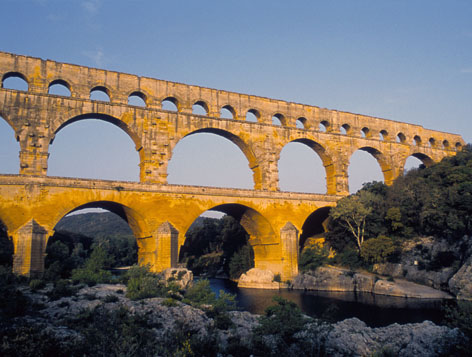
Pont du Gard
Pont du Gard is an outstanding example of Roman ingenuity and engineering is much to good to miss. There is a nearby interpretation centre which tells all, letting you drift back in time. But there is no substitute for a walk across the aqueduct itself. It is the only way to appreciate how remarkable it is.
Many years ago, I used to guide American tourists around Provence, and this was one of the sites we came to visit. In those days it was possible to walk across the very top of the structure, standing on the rock slabs that covered the actual water course. With nothing between you and a dramatic plunge, 160 feet to the Gard below, such enterprise was stopped long ago. But you can still marvel quietly.

Christmas markets in Strasbourg
Christmas markets (Christkindelsmärik) are held at many locations, but for me that in Strasbourg has special appeal, probably because it was my first. It's also the oldest in France, with a pedigree that extends back to 1570. This is a time when everyone is allowed to be a child: adults gorge themselves on barbe à papa (candy floss), bretzels, brioche and (pommes d’amour) toffee apples made from the late-ripening crunchy red apples of Alsace, and the kids are traumatised with joy...and, of course, no visit is complete without a warming glass of vin chaud; in fact, you may have to have three or four, purely in order to compare notes, of course.
But anyone planning on visiting Strasbourg at this marvellous time of year, needs to book well ahead; it is very popular, and hotels fill up quickly.
Read our guide to Strasbourg Christmas markets.
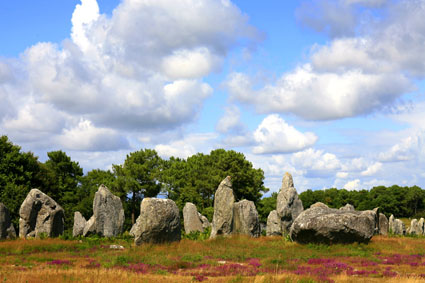
Even when you know what to expect, you don't believe it. Nowhere in the world boasts as many prehistoric monuments as Brittany: the very words to describe them – dolmens (table stones), menhirs (tall, standing stones) and cromlechs (stones arranged in a small circle to form a burial chamber) – are Celtic. And the vast majority are found in and around Carnac, making this the world’s premier megalithic site.
Most experts agree that the stones had Religious, Astronomical or Ritual purpose, maybe all three. But the mystery remains, and it is unlikely that we will ever know.
On one of my visits I was allowed to share the experience with a visiting group of 20 very lovely young ladies from Tasmania, and their teachers, equally lovely. I'd been given the choice: take the key, and enter the enclosed, non-public areas myself, or spend a couple of hours in delightful company. I confess, it took me almost a whole nanosecond to decide.

The Millau viaduct
Designed by English architect Norman Foster with the celebrated French engineer, Michel Virlogeux, the Millau viaduct is a marvellous site to behold, and an even more impressive one to drive across. It carries the A75, and its 2.5km length is supported by seven slender concrete piers, the greatest standing higher than the Eiffel Tower, making this the tallest man-made structure in France.
My first vision of the bridge came after a precarious ride on a quad bike, which led to the top of a small hill at the northern end of the viaduct – the ‘official’ viewing platform is on the other side. It is simply quite breathtaking, all the more so if you contrive to find your way out of Millau and head along the road to Peyre – one of Aveyron’s ‘Most Beautiful Villages in France’ – which will take you directly beneath the bridge, and on to the village. There is a real old world charm about Peyre which rather nicely sits in juxtaposition with the viaduct in the distance: old and new in harmony.

Gavarnie waterfall
The Gavarnie Falls (Grande Cascade de Gavarnie) is a tiered waterfall with an overall drop of 422m (1,385 feet), and is the highest waterfall in France. The falls are in the Cirque de Gavarnie, near the village Gavarnie in the Hautes-Pyrénées.
The waterfall is the beginning of the Gave de Pau stream, fed by a melting snow and a small glacier, located in Spain. This water seeps underground until it appears at the upper rim of waterfall.
The walk to the waterfall is not difficult, but neither is it short, and ideally you should wear boots. From Gavarnie you can go much of the way on horseback, at a cost. But simply by following the valley road southwards towards the ever-growing cliffs of the great cirque, you will eventually reach a massive amphitheatre with the waterfall plunging down at its head. Intrepid walkers can go all the way up to the base of the waterfall, but expect to get a drenching if the wind changes direction. Or, you can stop at the nearby auberge, order a beer, and watch other folk getting wet.
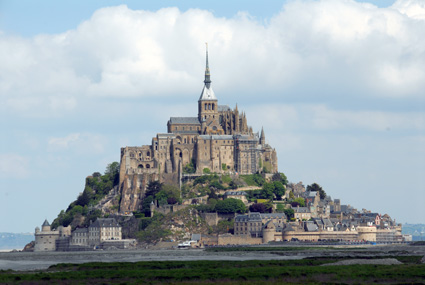
Mont St-Michel
One of the most iconic places to visit in France. Featured in so many movies and has even hosted the start of the Tour de France. It's one of the most amazing sites in Europe.
It is difficult not
to be impressed with Mont St-Michel, an
extraordinary site with a rich history and superb architecture. The streets
below the abbey and church are invariably crammed with visitors, served by
restaurants, a few hotels, souvenir shops selling products of dubious quality.
But it is the overpowering sense of isolation that dominates, especially on the
few occasions each year when the sea finally isolates the granite island.
According to mythology, Mont-St-Michel was the abode of the souls of the dead.
Amiens Cathedral
The cathedral in Amiens is rightly a World Heritage Site, but the most memorable encounter I had with this Gothic masterpiece was the son-et-lumière, when by dint of illuminatory magic the magnificent west façade of the building was turned into glorious colour.
The sculpted decor of the doorways was originally painted in bright, dazzling colours in the Middle Ages, but over time, these have faded away on the stone. Today, this fleeting, multicoloured array, showcased by Skertzò, gives a fresh vision of the medieval architecture thanks to new technologies. The result is quite spectacular! The commentary begins in French, but is followed by a commentary in English. Just turn up at 10.45pm in June; 10.30pm in July; 10.00pm in August, and 9.45pm in September, in the cathedral square, and enjoy one of the finest free shows you'll ever see.
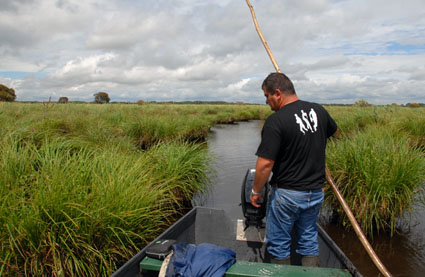
Parc Naturel Régional Brière (La Grande Brière)
The Parc Naturel Régional Brière (La Grande Brière), in the Loire-Atlantique département, is a 20,000-hectare area of peatland, reed beds, floodplains, canals, lagoons and watercourses second in importance only to the Camargue. These marshes, through which near-silent trips in flat-bottomed boats are organised, are a delight for bird watchers, with more than 200 species recorded annually including such delights as nightingale, purple heron, egret, spoonbill, bluethroat and numerous warblers.
Still used for cattle grazing and peat extraction during the late summer when much of the water has gone, large areas have, however, been progressively abandoned by man, and this has led to colonisation by reeds, willows and elms. From time to time large chunks of fossilised tree emerge, more than 5,000 years old, known as mortas and somewhere in constitution between petrified wood and rock. Today, the reeds are a ready supply of roofing material, as evidenced by the thousands of thatched cottages found in the many small villages and hamlets that dot the reserve area.
There is a great peace among the reed beds, especially when you are being punted along by the broad shoulders of a guide. But out in the middle of the marsh, where one clump of reeds looks very much like another, you become acutely conscious of how reliant you are on the man heaving the boat along to get you back to dry land.
more Places to visit in France
related articles
things to do
places to go
Recent Articles
-
French Food and Drink - No BS Guide for lovers of Food, Wine, Liqueurs
Aug 28, 19 03:18 AM
Our guide to French food and drink for those who love traditional French food along with our no BS guide to understanding French wine and liqueurs
-
Things To Do In Carcassonne The Ultimate Tourist Guide
Aug 24, 19 06:26 PM
The ultimate tourist guide to things to do in Carcassonne when you visit this wonderful town in Aude France. Discover the places to go and see in Carcassone.
-
Lyon Old Town Guide to Vieux Lyon
Aug 18, 19 07:48 AM
Your complete guide to Lyon old town otherwise known as the Vieux Lyon. Don't miss this amazing part of the city if you're visiting Lyon in France.
-
18 French Villages You Must Visit Most Beautiful Villages in France
Aug 17, 19 06:31 AM
Our guide to the 18 most beautiful French villages you simply must visit. Loads of info, photos and facts in our ultimate villages in France tourist guide
-
What a Pissoir - The True Story of France's Unique Urinals
Aug 13, 19 03:47 PM
Is there anything more French than a pissoir? Sadly on the decline nevertheless the pissor is an endring image of the country. This is their story





